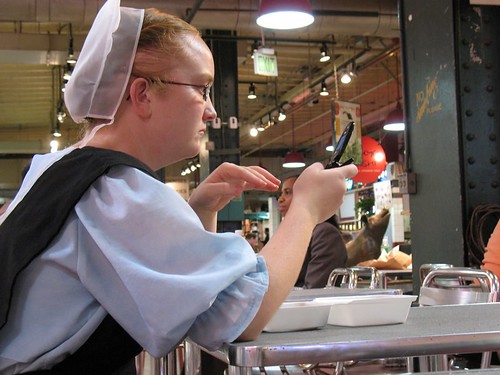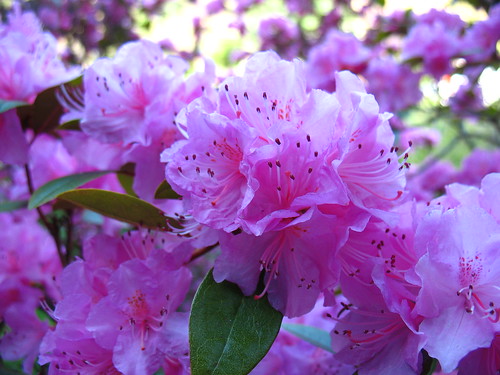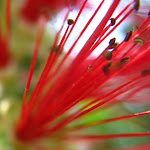Saturday, May 25, 2013
Wednesday, May 22, 2013
Old daffodils
I visited an old mansion a few days back, with an old overgrown garden and park. My interest was to see if there where any old bulb plants left, and it was! Large stands of narcissus, scattered daffodils and peonia rugs where visible. The narcissus I found was a kind I never seen before. A Google search later I think it could be A narcissus called White Lady. It's known in cultivation before 1927, but the origin is not known. It is the big white one with a yellow trumpet.
Posted by
EH
at
5:28 PM
1 comments
![]()
Labels: flowers, garden, history, plants, Södertälje, spring, Sweden
Sunday, May 19, 2013
Up and coming plants and botanicals
A few days ago I attended a big commercial fair about cosmetics and botanicals, where the suppliers to the cosmetics companies showed of the newest, bestest, cheapest and, of course, the most 'naturalests'.
I can't even count how many times I saw '100% natural' on signs there. The strangest was the sign that said 'Ultra-organic', I wonder what that is. Pure carbon? Another sign said '100% botanical'. Hmm, no water in that product? All marketing, of course.
Anyway, here is my report:
Up and coming botanical products, soon in a store near you (if not already):
Meadowfoam seed oil (from Limnanthes alba, a springflower native to NW USA).
Camelina sativa oil (camelina was grown in ancient agricultural societies in Europe, and now it is back!)
Borage seed oil (Borago officinalis - this wonderful blue-flowered plant with edible flowers that look like they can sting you with their black anther-pistil shaft. The leaves look like hairy tongues. )
Echium seed oil (from the European species Echium plantagineum, now an invasive species in North America - yes, let's use up the invasive species, I love it! I mean it, I am not joking... It is also toxic in large doses.)
Argan oil (from Argania spinosa, an ancient crop tree of the berbers of Morocco, and the new natural product darling of the upscale cosmetics companies)
Can you imagine a field of these plants grown as crops? That would be a bit different than a field of beets or lettuce...
From the non-botanical end of things, there are now crushed garnet included in some skin exfoliator products. Talk about wasting a beautiful gemstone!
Posted by
LS
at
4:45 PM
0
comments
![]()
Labels: botany, chemistry, commercialism, ethnobotany, flowers, marketing, plants
The amazing world of candy cultures: Sweden
I believe that candy and desserts are one of the few areas were strong cultural differences still live on. Thai, Chinese, Italian, Japanese, and American food have conquered the world and anybody knows what sushi, burgers, and ketchup is now. But I think candy has a long way to go to become more global, at least candy outside of the chocolate main stream.
So, for your food education, here is some typical Swedish candy that you can't really buy in the US or other countries of the world (the northern parts of EU excepted).
First, Swedes love licorice, and they love salty, sour or very fruity candy. Generally speaking, American candy of today is either supersweet (sickly sweet), or chocolatey, and that is different from the Swedish candy. Swedes also like mixes of flavors (salt & sour, etc.).
Turkisk peppar ('Turkish peppar'). Horribly hot-spicy hard licorice candy with a dry powdery inside with ammonium chloride (salmiak) powder. Great!
Classic Swedish candy called Gott & Blandat (= Good and Mixed). It includes sweet and salty licorice and wine gum. This is the traditional classic kind and there are also newer kinds around (salty, sour, etc.).
Djungelvrål ('Jungle howl') are supersalty little licorice pieces that are very chewy and good.... also with ammonium chloride, which some people of this household call 'diaper candy' - I think ammonium chloride salt is a very acquired taste. You either hate it or love it, kind of like celery and cilantro.
Salta katten ('The Salty Cat') comes in tiny old-fashioned small paperboxes and are small pieces of licorice, also with ammonium chloride. Really good stuff! I love the design - check out the tongue of the cat!
Then there is of course Swedish fish - WHICH DOES NOT EXIST IN SWEDEN. This is the American version of Swedish fruity, chewy, sugary candy, which in Sweden comes in many shapes and forms, not just red fish. The most common are 'sega råttor' (= chewy rats), which often are green, yellow, red or maybe even in black (licorice). Oh, and this custom of calling non-black things licorice as you do in the US, that doesn't exist in Sweden. Licorice is always black and always has true licorice plant extract in it.
Friday, May 17, 2013
17 maj - A day of celebration!
Posted by
EH
at
2:53 PM
1 comments
![]()
Sunday, May 12, 2013
Back again! Periodical cicadas in NJ
In 2004, during our wedding here in New Jersey, was one of the outbursts of the periodical cicadas, which has a 17-year life cycle. They were everywhere! They were part of the "Great Eastern Brood", the largest of the populations.
This year another brood of these noisy insects are back, and we have just started to hear a few in the forests this passed week. It doesn't seem to matter if it is daytime, dusk, dawn, or night - they go on making noise on and off regardless of light or not. They sound like this. This is called the 'East Coast Brood', and these insects have been living underground on tree roots since 1996. Amazing!
Posted by
LS
at
9:09 AM
0
comments
![]()
Labels: biodiversity, insects, New Jersey, sound, time, tree, USA
Friday, May 10, 2013
Stamp of the Day: Baltimore checkerspot
The post office released this stamp for the particular use on large envelopes for greeting cards. How practical! I use them for letters to Sweden that need more than the usual postage. More on the stamp, the art, and the orange, black and white here. These were the color of the coat of arms for Lord Baltimore, who not only gave name to the city, but also this butterfly, and the bird called Baltimore Oriole, which we have in our yard. It hasn't arrived yet this year, but it will, and it builds hanging woven nests in the big silver maples along the road.
This butterfly is relevant to me, because tomorrow I am driving to Baltimore to pick up AREA who has finished her first year in college (yeah! congratulations!!!). I doubt we will bring back any butterflies or birds in the car, but there will be art, more art, kitchen stuff, a table, microwave, unused foods, and who knows what that will need to be emptied out from her college apartment and stuffed into my car. Welcome home AREA!
Tuesday, May 7, 2013
Modern life, with a smartphone in hand...?
" Everywhere I looked people were detached from everything around them. From the beautiful produce, the delightful pastries, the never-before-in-the-history-of-man selections of great wines and cheeses. The guys were not "checking out" the plethora of beautiful girls flowing like spring water thru the aisles. The women weren't even noticing the displays of chocolate. Instead, they did the "thorazine shuffle" with their carts aimlessly navigated with one hand and the rest of their being concentrated either on staring like zombies at the screens of their iPhones or Blackberries, or wandering without a compass while listening to something at the other end of their cell connection, eyes staring off into the middle distance. " [by Kirk Tuck]From this fantastic blogpost, read the rest of it, it is worth at least 5 minutes of your time. The blog is called Visual Science Lab and is written by Kirk Tuck. Lots of great thoughts there! (and thanks PP for sending the link to me)
This is so true. And as an owner of an iPhone, which can be incredibly useful at times, I am happy to admit that and I use it more often than necessary, I also see the horrible addiction possibilities. I often think that it is the software opportunities, apps, and 'things' on the technologies that pull people in, more than the technology per se - things like texting (instant), Facebook (instant), twitter (instant), and the need to be connected, to whatever that might be - the instant feed of stuff you haven't asked for. I am sure there are situations where these instant feeds can be a good thing, but if 95% of it isn't, then it is a problem. And it just pushes more people just to think about me-me-me or superficial snapshot moments, instead of less self-focused things with deeper reflections.
One of my students said 'I have to check Facebook all the time, I might miss out on something otherwise'. What that something might be, was less important. I think this me-me-me generation that is growing up now (and that includes people of my age too), are actually horribly afraid of being alone, being unimportant, or being self-sufficient without input from other people. To lay in a sofa and read a book during a Saturday is considered weird. Go for a walk? Weird. Try to produce something thoughtful or beautiful over a longer time, not an instant opinion or just reaction to something, is unusual.
Life in the internet and wi-fi age has turned into fast, fragmented, and furious. My best thinking time and planning time is the early morning walks, just me, a friend, and a quiet morning with hammering woodpeckers, sunrise in dewy grass, and right now, shining white flowering dogwoods in the forests. No interruption, just one hour of walking and talking and thinking and figuring it all out. Without any digital technology, but the iPhone is in the pocket if a photo is needed, but usually the photos turn out so bad on it, that it isn't worth taking one. My old digital camera is a lot better, but heavier, so it stays home.
Monday, May 6, 2013
Sunday, May 5, 2013
A little oasis in Washington DC - Dumbarton Oaks garden
We visited Washington DC two days this past week and in the middle of this busy, self-important and rather abstract city of lawyers, lobbyists, politicians, administrators in massive federal buildings and regular people that just try to make ends meet, is a little oasis of green.
The old Dumbarton Oaks estate is on a hilltop with old ancient trees (well, maybe only as old as the city, a couple of hundred years), and landscaping that reminded me of the gardens at Chanticleer in Pennsylvania, another favorite of mine.
Here are some photos of this wonderful place. The wisterias and dogwoods were in bloom... Visit if you can.
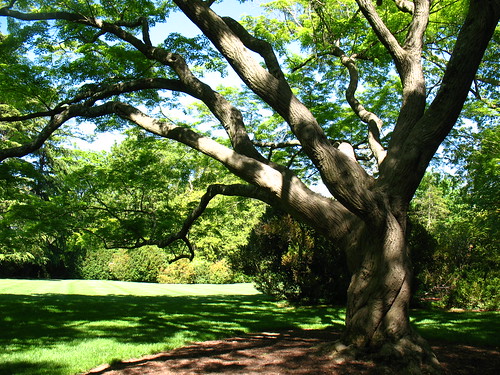

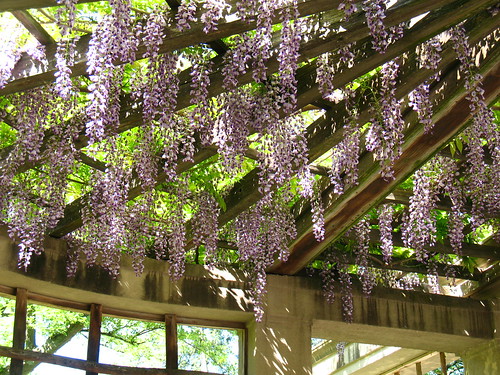

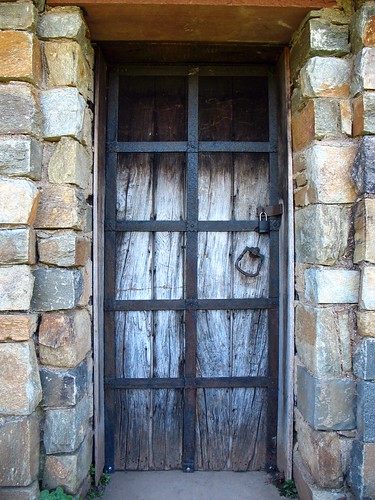

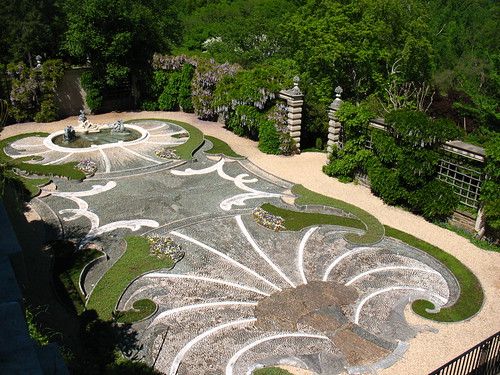
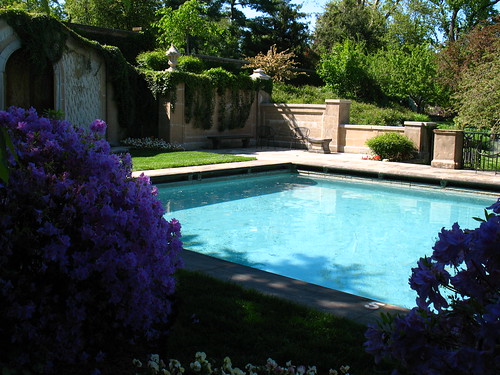

Posted by
LS
at
10:57 AM
3
comments
![]()
Azaleas by our front porch
I just love this season.... I don't know the species name of this Rhododendron, but the flowers are enormous, and the plant is tall enough so the deers can't reach the buds in the winter.
Posted by
LS
at
10:46 AM
0
comments
![]()
Friday, May 3, 2013
The rain is coming soon- April edition
Posted by
EH
at
4:35 PM
0
comments
![]()
Labels: agriculture, Cloud, forest, rain, spring, Sweden, weather
Thursday, May 2, 2013
Stamp of the Day: Gotska Sandön
In the Baltic Sea, far out north of the biggest Baltic island of Gotland, lays a smallish island made from sand. It is appropriately named 'Gotska Sandön', which means the 'Gothic Sand Island'. It is a magical, rough place of excessive beauty, and has a long history as a place for pirates that plundered ships that had wrecked on the sand barriers. There was never many people living on this island, just a small group of farmers or traders, and today mostly ecotourists visit in the summer.
I was there in 1982, when I was 15, on a trip I have vivid memories from. You had to travel there on a fishing boat, about 4-5 hours over the sea, and we had to bring all food and everything else we needed. There is freshwater on the island, but not much. There is no harbor, so you have to use a small dingy to get ashore and wade the last part in the waves (which are cold in this part of the world). Of course you can only get to the island when the weather is calm too.
These days it is a Swedish National Park, and most of the island is pure sand with either pine or oak forest. Large sand dunes along the beaches, some orchids (like the pink one above), nesting terns, and driftwood. Walking on the dunes is one step forward, glide two steps back. There are pebbles on the beaches that are totally transparent, from quartz. It was pure wonderful Swedish summer, green, lush, sunny and not too hot.
This Swedish stamp was made by the artist Gunnar Brusewitz, a famous watercolor painter who painted Swedish nature. Here are some more photos from this island (Flickr pool). And, this is how it looks like from the air.
Posted by
LS
at
12:10 AM
2
comments
![]()
Labels: Baltic sea, family history, nature, stamps, Sweden, travel













